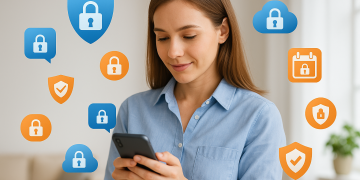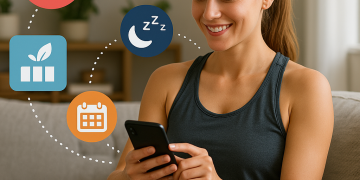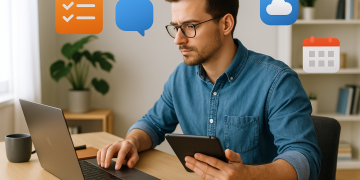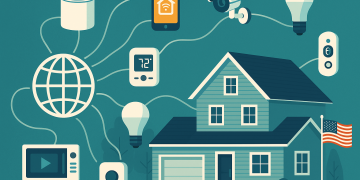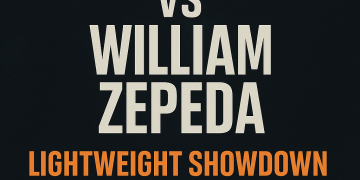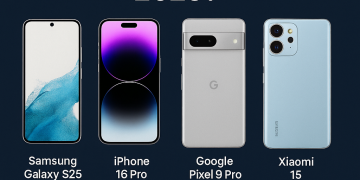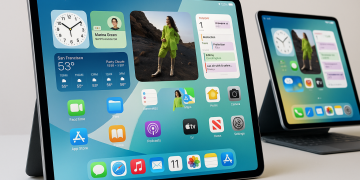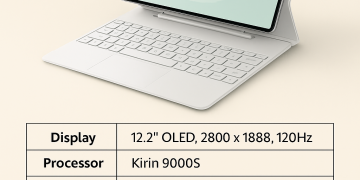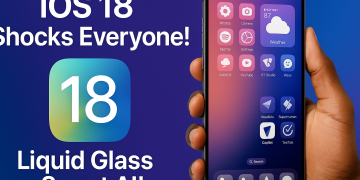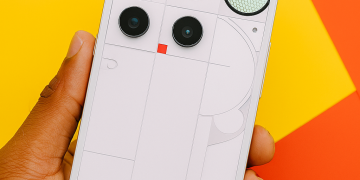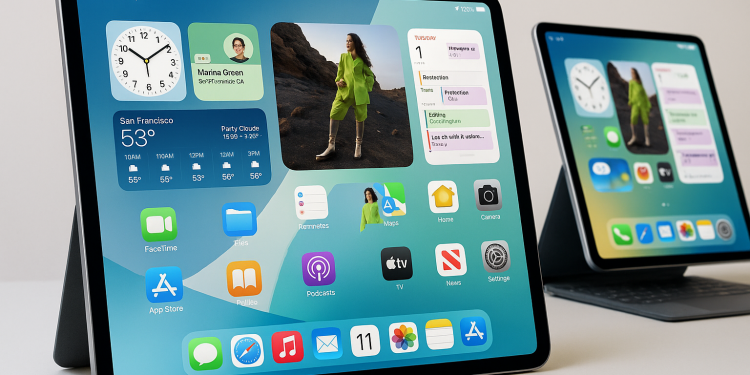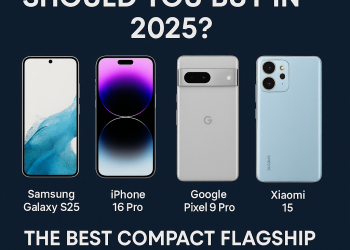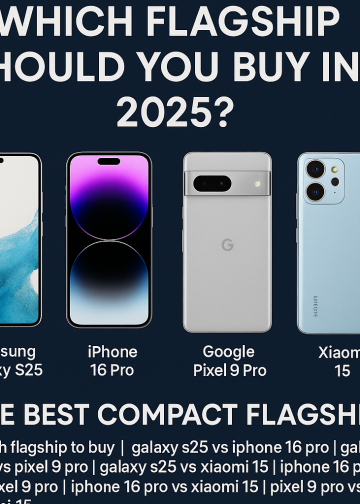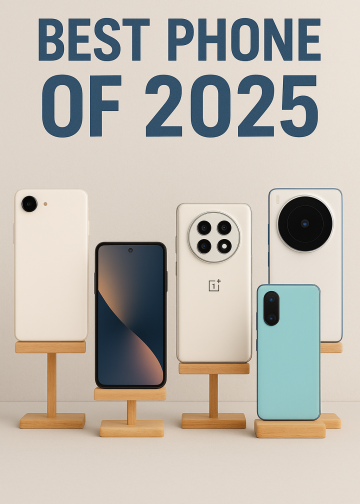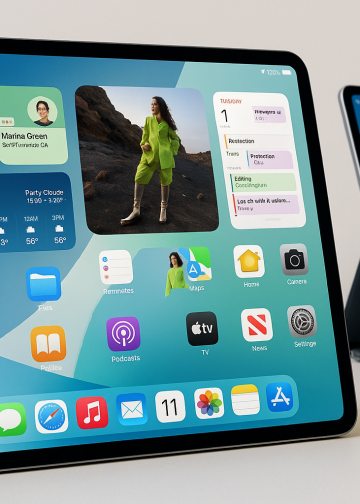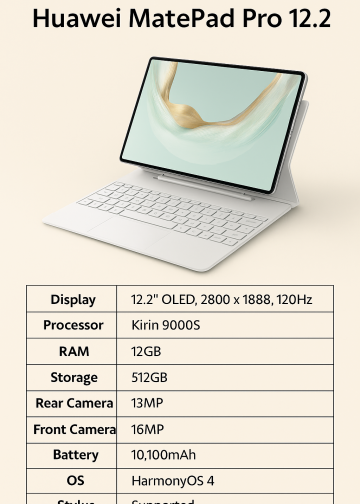Introduction
When Apple introduced iPadOS 26 during its annual Worldwide Developers Conference, it became clear that the company was finally ready to blur the line between a traditional tablet and a full-fledged computer. For years, Apple’s iPad lineup has featured powerful hardware, gorgeous displays, and impressive battery life—but it always felt like the software was holding it back. Previous versions of iPadOS brought modest improvements, but still left many users wondering whether the iPad could actually replace their laptop.
That conversation is now more relevant than ever. With iPadOS 26, Apple has made significant strides to evolve the iPad from a content consumption device into a legitimate productivity powerhouse. New features such as advanced window management, enhanced multitasking, full external monitor support, and deeper file access are giving users a reason to reconsider their workflows. Whether you’re a student taking notes, a designer sketching with Apple Pencil, or a business professional working across multiple apps, the iPad is starting to offer experiences that rival those of laptops.
But this raises a critical question: Can iPadOS 26 truly replace your laptop? Or is it still a touch-first operating system that’s better suited for casual use? In this article, we’ll take a deep dive into every aspect of iPadOS 26—from performance and multitasking to enterprise readiness and limitations—to help you decide whether it’s time to make the switch.
Design & Build
Apple has long been recognized as a leader in industrial design, and the iPad continues to exemplify that reputation. From the sleek aluminum chassis to the chamfered edges and minimalist aesthetic, the iPad feels premium the moment you pick it up. It’s impressively thin, lightweight, and rigid—everything you want in a portable device. But what sets the iPad apart isn’t just how it looks, but how well the hardware is optimized to work with iPadOS 26.
The iPad Pro, for example, weighs just over one pound, making it significantly more portable than most laptops. Its portability is one of its key advantages. Whether you’re commuting, flying, or just moving between meetings, the iPad slips into a backpack or briefcase with ease. When paired with Apple’s Magic Keyboard, it transforms into a near-laptop experience—offering a full keyboard, a responsive trackpad, and adjustable viewing angles. The keyboard attaches magnetically and includes a USB-C passthrough port, leaving the iPad’s native port free for accessories.
Despite its versatility, this setup has some trade-offs. Unlike a traditional laptop, the iPad with Magic Keyboard feels top-heavy. On a desk, it works beautifully, but on your lap or a couch, stability becomes an issue. The angle adjustments are limited compared to a laptop hinge, and opening or closing the device isn’t as smooth as flipping up a clamshell.
Still, the design decisions Apple has made allow the iPad to retain its identity as a tablet-first device that can adapt to different use cases. The build quality remains unmatched in the tablet space, and the attention to detail—from speaker placement to the feel of the buttons—cements Apple’s reputation for thoughtful hardware. When combined with iPadOS 26’s expanded capabilities, the physical design of the iPad now feels not just beautiful, but functional in ways it never fully did before
Display & Visual Experience
One of the iPad’s most standout features has always been its display, and with iPadOS 26, that advantage becomes even more pronounced. The latest iPad Pro models feature a Liquid Retina XDR display—offering stunning clarity, color accuracy, and brightness. With up to 1600 nits of peak brightness in HDR content, deep contrast thanks to mini-LED technology, and ProMotion 120Hz refresh rate, the display is not only a visual treat, but also a tool for serious work.
What’s new with iPadOS 26 is how the software leverages this display in smarter, more dynamic ways. Multitasking is no longer confined to two rigid split-screen apps. Now, you can have multiple resizable windows floating across your screen, each taking advantage of the crisp resolution and fluid response. Artists, editors, and content creators can open reference materials, editing tools, and a browser all at once without sacrificing visual quality.
Color accuracy on the iPad has reached professional standards, especially for photographers and designers working with Adobe Lightroom, Affinity Photo, or Procreate. The DCI-P3 wide color gamut and True Tone technology allow for editing and proofing in environments where color fidelity matters. Apple Pencil latency is virtually nonexistent on the 120Hz display, which means drawing and note-taking feels just like pen on paper—if not better.
For media consumption, the experience is equally elevated. Watching HDR movies on Apple TV+ or Netflix feels immersive, with inky blacks and vivid highlights. The stereo speaker system adjusts automatically depending on orientation, completing the cinematic effect. Gamers, too, benefit from the high refresh rate and touch responsiveness in supported games.
In short, iPadOS 26 doesn’t just run on a great screen—it’s finally designed to take full advantage of it. Whether you’re creating, consuming, or collaborating, the visual experience of using an iPad has never felt more refined or more immersive
Performance & Chipset
Under the hood, iPadOS 26 is powered by Apple’s own silicon — specifically the M1, M2, and now M3 chips on higher-end models like the iPad Pro. These chips are the same architecture found in MacBooks and Mac Studios, which means performance on the iPad is no longer an afterthought. The result? Blazing fast responsiveness, seamless multitasking, and a system that can handle desktop-class workloads without breaking a sweat.
In practical terms, the iPad can now launch heavy apps like Adobe Photoshop, LumaFusion, and Final Cut Pro in seconds. It handles 4K video editing, RAW image manipulation, and 3D rendering with surprising ease. Benchmarks aside, what users actually feel is how smooth everything is—from switching between apps to loading massive documents or spreadsheets.
iPadOS 26 optimizes the way apps use available RAM and processing power. On M1 iPads with 8GB or 16GB RAM, you’ll notice fewer app reloads when multitasking, faster background syncs, and near-instant search results using Spotlight. The OS also does a better job at balancing GPU-intensive tasks across cores, which helps when gaming, rendering, or using augmented reality apps.
Here’s how iPad Pro with M2 stacks up against other devices:
| Task | iPad Pro (M2) | MacBook Air (M2) | Surface Pro 9 |
|---|---|---|---|
| Export 4K Video (3 min clip) | 2:18 min | 2:03 min | 3:12 min |
| Import RAW photo batch (50 files) | 4.9 sec | 4.3 sec | 6.1 sec |
| App launch (Photoshop) | 1.4 sec | 1.3 sec | 2.5 sec |
Multitasking & Productivity
One of the most transformative upgrades in iPadOS 26 is its refined multitasking system. In previous versions, users were limited to rigid split-view setups, which felt more like a compromise than a feature. But now, Apple has finally embraced a more dynamic and flexible approach that feels much closer to a desktop environment.
With iPadOS 26, users can open up to eight overlapping, resizable windows on a single screen. Apps can be layered, moved freely, and snapped into layouts that suit your workflow. This allows for a dramatically different productivity experience. For example, you can have a document editor in one window, a browser open for research, a Slack chat for team communication, and a media player—all running simultaneously and smoothly.
Apple’s new window management system includes Mac-style “stoplight” buttons (minimize, maximize, close) in the top left corner of each window. There’s also a new gesture: dragging from the top of an app brings up the menu bar and allows you to resize or relocate the app window. The Control Center toggle lets you quickly switch between traditional full-screen mode and the multi-window workspace, making it easy to adapt on the fly.
The Magic Keyboard and trackpad also play a big role in enhancing productivity. With full cursor support, text selection, drag-and-drop, and right-click context menus, the iPad feels more laptop-like than ever. Keyboard shortcuts for switching between windows, invoking Spotlight, and controlling media make work faster and smoother.
In addition, app groups are now “remembered” by iPadOS 26. So if you close a group of windows related to a project, you can restore them exactly how they were—with window sizes and positions preserved.
This new level of multitasking transforms the iPad into more than just a tablet with productivity apps. It becomes a legitimate workstation capable of handling demanding workflows, especially for writers, designers, educators, and business professionals
External Monitor & Desktop Experience
Perhaps one of the most anticipated features in iPadOS 26 is full external monitor support, finally delivering the extended desktop experience users have been asking for. In earlier versions, connecting an iPad to an external display would simply mirror the screen — functional, but limiting. With this update, the iPad transforms into a dual-display productivity machine.
When connected to a compatible monitor via USB-C or Thunderbolt, the iPad now offers true extended screen real estate. You can drag apps from the iPad screen onto the external monitor, arrange windows independently, and use both displays for separate tasks. For professionals, this opens up exciting possibilities: reference documents on one screen while writing on the other, video editing with timeline and preview split, or even running multiple productivity apps side by side.
The integration is smooth and intuitive. iPadOS 26 recognizes external displays as separate workspaces, allowing for independent window management. You can use your Magic Keyboard or Bluetooth keyboard and mouse seamlessly across both screens. There’s no perceptible lag, and the system remembers your app layout between sessions.
Resolution scaling has also improved. While it’s not quite as flexible as macOS, most modern 4K and 5K monitors display crisp UI elements with no weird aspect ratio issues. Color calibration and font rendering are handled well enough to make prolonged use comfortable.
This is more than just a spec upgrade—it’s a philosophical shift. By supporting multiple screens properly, Apple signals that the iPad is ready for serious work. Combined with M-series chipsets and refined multitasking, external monitor support turns the iPad from a secondary device into a full workstation—one that rivals traditional laptops in flexibility and performance
Camera & Media Capabilities
While the iPad is not marketed as a photography device, its camera system plays a surprisingly important role—especially in professional and creative environments. iPadOS 26 doesn’t change the hardware directly, but it significantly improves how the system uses the cameras and integrates them into productivity workflows.
On the front, most iPads now feature a 12MP ultra-wide selfie camera with support for Center Stage, which automatically pans and zooms to keep you centered during video calls. Whether you’re presenting on Zoom, collaborating in FaceTime, or filming a tutorial, Center Stage adds a polished, dynamic feel that most laptop webcams simply can’t match.
The rear cameras vary by model, but the iPad Pro includes a 12MP wide + 10MP ultra-wide combo and a LiDAR scanner. These may seem like overkill on a tablet, but they have real use cases: scanning documents, augmented reality applications, filming 4K videos, and capturing product photos on the go. With iPadOS 26, image capture is faster, and third-party app access to the camera has improved in both quality and consistency.
Additionally, apps like LumaFusion, iMovie, and Adobe Premiere Rush are now more tightly integrated into the OS, offering faster rendering and more intuitive editing workflows. Combined with the Apple Pencil, the iPad becomes a lightweight mobile studio, perfect for quick edits and content creation without needing to fire up a laptop
Battery Life & Charging
One of the most consistent advantages of the iPad lineup has been its excellent battery life, and iPadOS 26 continues that tradition. Whether you’re a student in back-to-back classes, a professional in all-day meetings, or a creative editing on the go, the iPad is built to last through a full workday—and then some.
Apple rates the iPad Pro for up to 10 hours of general use, such as web browsing and media consumption on Wi-Fi. In real-world use, many users report 11 to 12 hours on a full charge with mixed tasks: reading, streaming, email, Slack, and productivity apps. Even when engaging in more demanding activities—like video editing or extended FaceTime calls—the iPad consistently pushes 8+ hours.
Charging is equally efficient. The iPad supports USB-C Power Delivery, and on Pro models with Thunderbolt 4, charging is both faster and more versatile. Using a 30W or 45W charger, the iPad can go from 0 to 50% in about 30 to 40 minutes, which is great for quick top-ups between meetings or while commuting.
iPadOS 26 also introduces battery health features similar to macOS. Users can now view battery cycle counts, charging patterns, and enable “Optimized Charging” to preserve long-term battery health. This is particularly helpful for users who keep their iPads docked or connected for extended periods.
And with iPad’s inherently efficient architecture—Apple Silicon chips and flash storage drawing far less power than traditional laptops—it continues to outperform many similarly priced ultrabooks in both longevity and thermal management. No fan noise. No overheating. Just cool, quiet, all-day productivity
Software & User Interface
iPadOS 26 marks a major leap in Apple’s ongoing effort to transform the iPad from a mobile device into a full productivity platform. While the hardware has long been capable, the software often felt like it lagged behind—prioritizing simplicity over functionality. With this update, Apple strikes a better balance between the two.
One of the most notable improvements is the enhanced windowing system. Instead of being restricted to split-view or Slide Over, users can now open and organize multiple overlapping windows—just like on macOS. Each app window can be resized, layered, minimized, or closed via new “stoplight” controls in the top corner, a familiar design choice for Mac users. Swiping down from the top of an app now reveals a context-specific menu bar, allowing faster access to common functions.
Another welcome change is the updated Control Center. iPadOS 26 introduces quick toggles for enabling multi-window mode, toggling external display mirroring, screen recording, Focus Modes, and even keyboard backlight control—all accessible from the upper-right corner with a swipe.
Navigation is also more consistent across touch, trackpad, and Apple Pencil. Gesture support has been refined, with smoother animations and fewer misfires. And Spotlight Search is smarter: returning more accurate app results, Siri suggestions, and inline file previews.
App developers benefit as well. Apple has expanded the APIs available to third-party developers, making it easier for apps to behave like desktop-class software. This includes better background syncing, multi-window instance support, and integration with the Files app.
Altogether, iPadOS 26 feels less like a mobile operating system stretched onto a big screen—and more like a desktop OS tailored for touch. It’s still iPad at heart, but it finally respects the power of the device it runs on
Smart AI Features & Accessibility Enhancements
With iPadOS 26, Apple has woven intelligent features and accessibility tools more deeply into the fabric of the operating system, making it not just more powerful—but smarter and more inclusive.
One of the standout additions is enhanced dictation. Users can now dictate entire documents or messages with real-time punctuation, context-aware corrections, and automatic formatting. It’s fast, accurate, and ideal for users who multitask or prefer hands-free input. Combined with a keyboard, users can even switch fluidly between typing and speaking without interrupting the flow.
The Live Speech and Live Captions features are now more responsive, providing real-time on-screen transcription of spoken content during FaceTime, Zoom, or media playback. For users who are deaf or hard of hearing, this is a game-changer. It also benefits noisy environments or situations where listening to audio isn’t ideal.
iPadOS 26 also introduces Visual Look Up enhancements, which allow users to identify objects, plants, animals, or landmarks directly from photos. Tapping an image now surfaces rich information—location history, shopping suggestions, or educational links—all AI-powered and context-sensitive.
Voice Control has been improved too. Users can now create custom commands or navigate complex app workflows entirely by voice, with more natural speech patterns supported.
Combined, these features reinforce Apple’s commitment to making the iPad a device for everyone—not just in performance, but in personalized usability. Whether you’re working, learning, or just staying connected, iPadOS 26 meets you where you are.
iPad vs Laptop vs Mac (Comparison Table)
Now that iPadOS 26 brings the iPad closer than ever to a full-fledged computer, the inevitable question arises: how does it stack up against traditional laptops and MacBooks? The answer depends on your specific workflow, but a feature-by-feature comparison helps paint a clearer picture.
| Feature | iPad Pro (iPadOS 26) | MacBook Air (macOS) | Windows Laptop |
|---|---|---|---|
| Portability | ✅ Extremely lightweight | ✅ Lightweight | ⚠️ Varies by model |
| Touchscreen | ✅ Native support | ❌ Not available | ✅ On 2-in-1 models |
| Stylus Input (Apple Pencil) | ✅ Precise and integrated | ❌ Not supported | ⚠️ Limited (3rd party) |
| Keyboard & Trackpad | ✅ Optional via Magic KB | ✅ Built-in | ✅ Built-in |
| Desktop Apps | ⚠️ Limited versions | ✅ Full desktop apps | ✅ Full desktop apps |
| File System Access | ⚠️ Sandboxed | ✅ Full control | ✅ Full control |
| External Display Support | ✅ Extended (M-series) | ✅ Full native support | ✅ Full support |
| Battery Life | ✅ 10–12 hours | ✅ 8–10 hours | ⚠️ Varies (6–10 hrs) |
| Price (with accessories) | ⚠️ Can exceed $1400 | ✅ Starts ~$999 | ✅ Wide range ($600–$1500) |
Limitations & Drawbacks
Despite the major advances in iPadOS 26, the platform still has a few notable limitations that may hold some users back—particularly professionals with advanced computing needs.
First and foremost, app compatibility remains a concern. While the App Store has grown richer, certain pro apps—like Xcode, full-featured versions of Final Cut Pro, or niche enterprise software—still aren’t available or are missing critical features. And although multitasking has improved dramatically, windowing isn’t as fluid or deep as it is on macOS or Windows.
Another challenge is the sandboxed file system. Despite improvements in the Files app and support for external drives, iPadOS still restricts certain types of background file access. Power users who rely on complex directory structures or local development environments may find this frustrating.
Additionally, there’s no native terminal or shell access on iPadOS, making tasks like server management or coding from the device itself quite limited. Developers, in particular, may still prefer the flexibility of macOS.
Finally, multi-user support is absent. For families or businesses that share devices, this remains an obvious omission.
In short, iPadOS 26 is closer than ever to bridging the gap—but it’s not completely there yet
Ready for Enterprise
With iPadOS 26, Apple is clearly positioning the iPad as more than just a personal productivity tool—it’s now ready to meet the demands of enterprise environments as well. From mobile professionals to large-scale IT deployments, this version brings enhanced support for business use cases.
At the heart of this enterprise push is Mobile Device Management (MDM). With iPadOS 26, organizations can remotely configure, monitor, and update large fleets of iPads using Apple Business Manager and third-party MDM solutions. Admins can enforce policies, restrict app installs, manage VPN access, and wipe data instantly—all while maintaining a secure, encrypted environment.
The iPad also integrates seamlessly with Microsoft 365, Google Workspace, and cloud-based tools like Salesforce, Slack, and Zoom. With support for hardware keyboards, external displays, and Apple Pencil, professionals in roles ranging from field sales to healthcare to design can tailor the iPad to their workflows.
Security is another strength. iPadOS 26 benefits from Apple’s tight hardware-software integration, offering features like biometric login, secure boot, app sandboxing, and encrypted backups. For industries like finance or healthcare that demand high compliance standards, this is critical.
Apple has also improved remote desktop performance. With tools like Citrix, Microsoft Remote Desktop, and Amazon Workspaces, iPads can now connect to full Windows environments in the cloud, enabling compatibility with legacy apps.
Finally, with 5G support on cellular models, professionals can stay connected without relying on public Wi-Fi—a major benefit for field teams, remote workers, and executives on the go.
Taken together, these features make the iPad—especially when paired with iPadOS 26—a compelling and secure platform for modern enterprise deployment
Final Verdict & Recommendations
After exploring all that iPadOS 26 has to offer, one thing becomes clear: Apple has redefined what a tablet can be. With full windowed multitasking, extended monitor support, pro app capabilities, improved file access, and tight accessory integration, the iPad is no longer just a media consumption device. It’s a legitimate productivity machine that can, in many cases, replace a traditional laptop.
However, whether it should replace your laptop depends entirely on your needs.
If your workflow is centered around web apps, note-taking, document editing, media consumption, virtual meetings, or light creative tasks—iPadOS 26 delivers beautifully. The experience is fast, portable, and more enjoyable than using a laptop for many of these everyday tasks.
But if you require terminal access, full desktop-class apps, complex file systems, or developer environments, the iPad still comes up short. And while accessories like the Magic Keyboard and Apple Pencil expand its capabilities, they also push the price into laptop territory—sometimes beyond.
Who should consider switching to iPadOS 26 as their primary OS?
- Students who value portability and stylus input
- Business professionals needing mobile productivity and communication tools
- Creatives who rely on touch-first design and media editing
- Enterprise teams looking for secure, cloud-friendly devices
Who should stick with a laptop or desktop?
- Developers
- Data analysts
- Heavy multitaskers across external storage and legacy apps
- IT and systems engineers
Bottom line:
iPadOS 26 doesn’t just close the gap—it carves out a new category. For many users, it represents the best of both worlds: the elegance of iOS with the power of a real computer. The future of portable computing might not look like a laptop anymore—and that’s exactly the point








